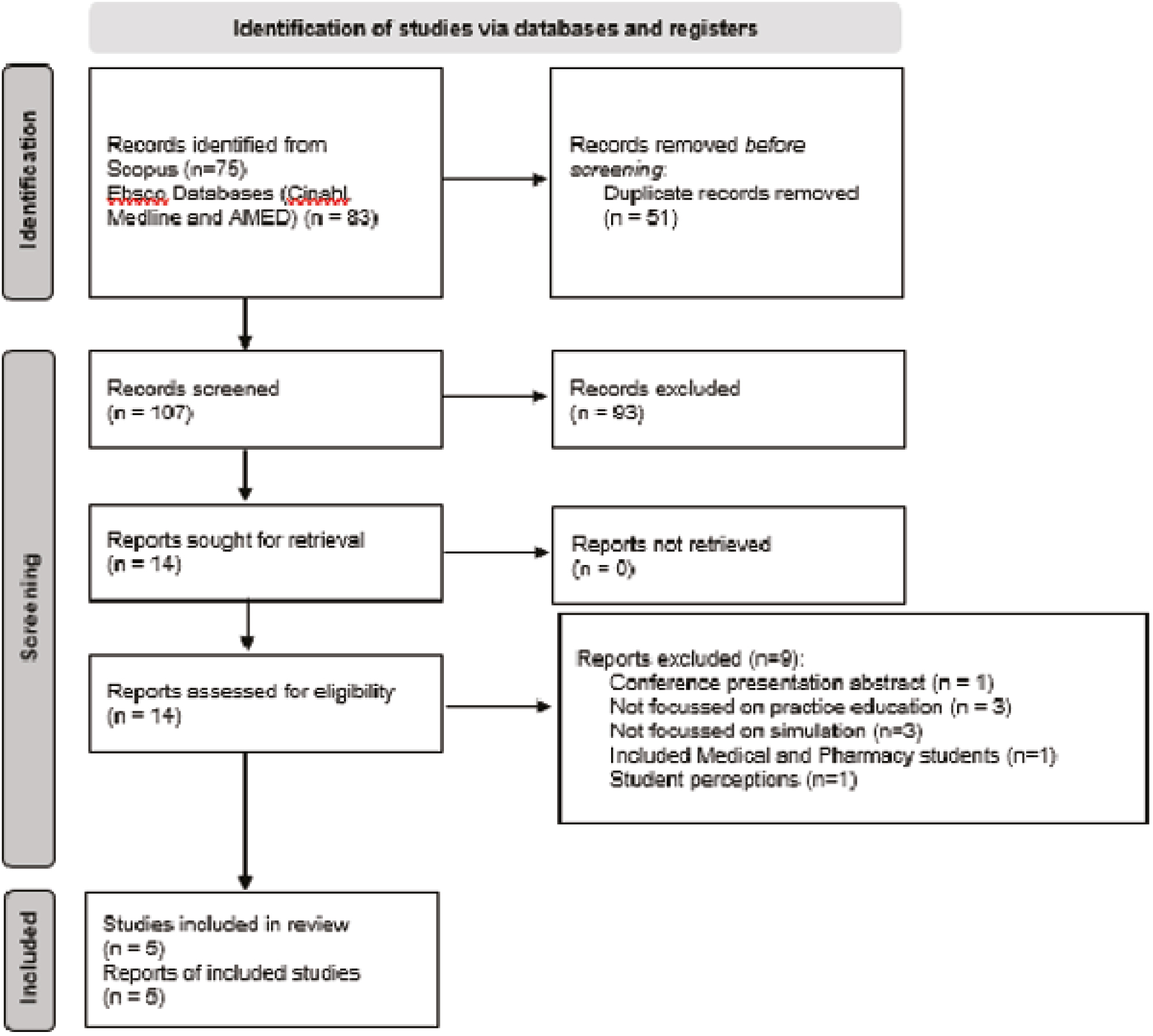
Simulation is increasingly being used in allied health professional and nursing education. There is evidence that student satisfaction with simulation is high, but limited research regarding educators’ attitudes and no existing review of this [1]. Placement capacity is an increasing issue and simulation could be used to address this, but adoption of this involves acceptance by educators and other stakeholders [2]. Therefore, the aim of this literature review was to explore the attitudes and experiences of allied health professional and nursing educators regarding the use of simulation in relation to practice education with the objectives of making recommendations for future practice and identifying areas for future research.
A qualitative systematic review was completed. Scopus, CINAHL, Medline, and AMED databases were searched in March 2022 using relevant search terms and subject headings where available. Inclusion/exclusion criteria were applied to identify appropriate peer-reviewed studies. The quality of articles was appraised using the Critical Appraisal Skills Programme qualitative studies checklist and data extracted using a table. NVivo 1.5 software was used to support the analysis of data using a simplified approach to thematic analysis to inform the discussion of the results [3].
Five studies were included from a variety of professions and countries (Figure 1) and overall quality of these was judged to be good. Three main themes were identified: Preparation, Educator Factors, and Outcomes. Each of these included several sub-themes and can be discussed in relation to the existing evidence. Educators value the opportunities simulation can provide such as standardisation, but this requires careful preparation and constructive alignment. Resources are required to achieve this, and more robust evidence is needed. The use of simulation is a change and educators noted that motivation to embrace this is needed and expectations regarding what can be achieved differs and should be clear. Outcomes recognised for students relate to what students themselves report. Educators see potential for simulation to increase placement capacity but there is concern that educators and students will need to work harder if time in practice is decreased.


Overall attitudes towards simulation and practice education were found to be positive. Benefits and risks from educators’ points of view were identified and can be used to inform practice. Areas for future study were identified for example exploring these concepts within the UK and other health professions.
1. Beveridge J, Pentland D. A mapping review of models of practice education in allied health and social care professions. British Journal of Occupational Therapy. 2020;83:488–513.
2. Buckley S, Hensman M, Thomas S, Dudley R, Nevin G, Coleman J. Developing interprofessional simulation in the undergraduate setting: Experience with five different professional groups. Journal of Interprofessional Care. 2012;26:362–369.
3. Aveyard H. Doing a literature review in health and social care: a practical guide. Open University Press; 2018.